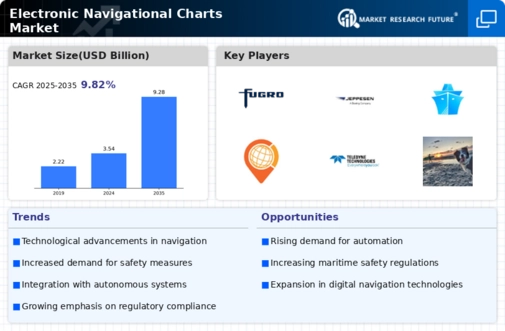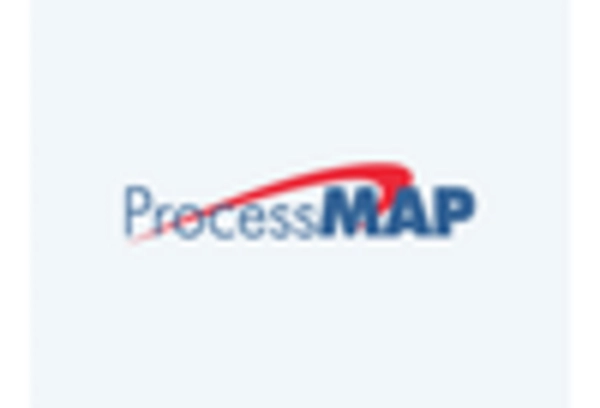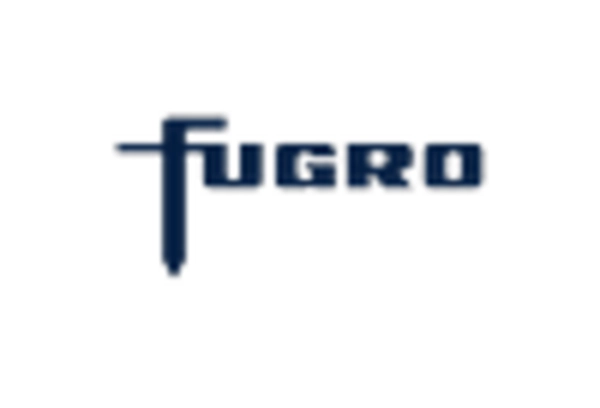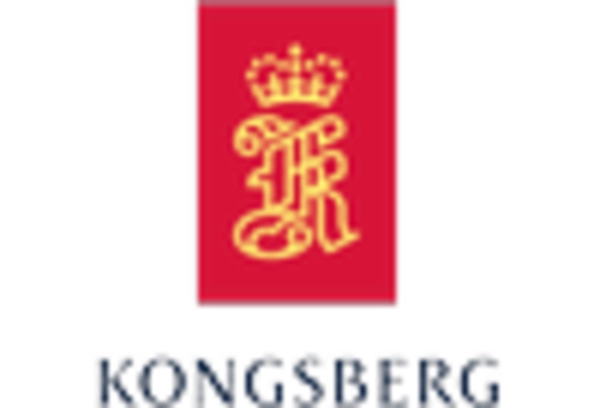Expansion of Maritime Trade Routes
The expansion of maritime trade routes is a key driver for the Electronic Navigational Charts Market. As global trade continues to flourish, new shipping lanes are being established, necessitating the development and updating of electronic navigational charts. This expansion is particularly evident in regions such as the Arctic, where melting ice is opening new pathways for shipping. The need for accurate and up-to-date navigational information is critical for vessels operating in these newly accessible areas. Consequently, the market is likely to see increased investment in chart production and updates, ensuring that navigational safety is maintained in these evolving trade routes.
Increased Demand for Maritime Safety
The Electronic Navigational Charts Market is experiencing heightened demand driven by the increasing emphasis on maritime safety. As shipping activities expand, the need for accurate and reliable navigational tools becomes paramount. The International Maritime Organization has set forth regulations that necessitate the use of electronic navigational aids, thereby propelling the adoption of electronic navigational charts. This trend is further supported by the growing number of vessels operating in congested waters, where precise navigation is critical to avoid accidents. The market is projected to grow at a compound annual growth rate of approximately 6.5% over the next five years, reflecting the industry's response to safety concerns and regulatory requirements.
Integration of Advanced Technologies
The integration of advanced technologies into the Electronic Navigational Charts Market is a significant driver of growth. Innovations such as artificial intelligence, machine learning, and real-time data analytics are enhancing the functionality of electronic navigational charts. These technologies enable mariners to make informed decisions based on real-time environmental data, improving navigation efficiency and safety. For instance, the incorporation of satellite-based positioning systems has revolutionized the accuracy of electronic charts, making them indispensable for modern navigation. As these technologies continue to evolve, they are likely to attract more users, thereby expanding the market further.
Growing Adoption of Autonomous Vessels
The rise of autonomous vessels is poised to transform the Electronic Navigational Charts Market. As the maritime sector increasingly embraces automation, the demand for sophisticated electronic navigational charts that can support autonomous navigation systems is surging. These charts provide essential data for route planning and obstacle avoidance, which are critical for the safe operation of unmanned vessels. Industry analysts predict that the market for autonomous ships will grow significantly, with electronic navigational charts playing a crucial role in their operational frameworks. This trend indicates a shift in how navigational tools are utilized, potentially leading to a more streamlined and efficient maritime industry.
Regulatory Support for Digital Navigation Solutions
Regulatory support for digital navigation solutions is significantly influencing the Electronic Navigational Charts Market. Governments and maritime authorities are increasingly endorsing the use of electronic navigational charts as part of their efforts to modernize maritime operations. This support is evident in various initiatives aimed at promoting the adoption of digital navigation tools, which are seen as essential for enhancing safety and efficiency in maritime transport. For example, regulations mandating the use of electronic charts in certain jurisdictions are driving demand. As regulatory frameworks continue to evolve, they are likely to create a more favorable environment for the growth of the electronic navigational charts market.

















Leave a Comment